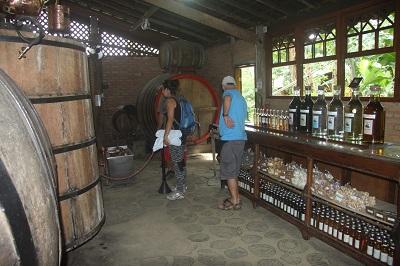Brazil and the Cachaca

A look at the history and significance of sugarcane schnapps
Brazil is famous for their cachaca. On your trip to Brazil, you will encounter this spirit, which plays the leading role in the Caipirinha. But few people know that it is the oldest and most traditional sugar cane schnapps in the world. Let us take a look at the history of this glorious drink.
The beginnings of the Cachaca: 16th century
Shortly after the Portuguese colonized Brazil, the alcoholic effect of pressed sugar cane juice was discovered in São Vicente, located in the state of São Paulo. The name, originally "Cagaca", is derived from the word "bagaca", which means "pressed sugar cane".
The ascent: 16th to 17th century
Historically, it can be traced back that the consumption of liquor began in the slave fields. Little by little, more and more sugar factories began to produce cachaca, which quickly became a valuable export commodity. This made it a competitor to the Portuguese sugar cane brandy, the "Bagaceira". We remember that Brazil was at that time part of the Portuguese colonial empire. The Portuguese crown therefore temporarily banned the production of cachaca from 1635 onwards. The high taxation that followed resulted in the "Cachaca revolt".
The lucrative years: 17th to 18th century
The Brazilian sugar cane schnapps boomed and became a shadow currency of the Portuguese to buy slaves from Africa. That is why Cachaca is still called "Moeda velha" (old currency) today.
Expansion in Brazil: 18th to 19th century
The production of cachaca became a constant in the late years of the colonization of Brazil. With the discovery of gold in the state of Minas Gerais, a separate production tradition began there. The first major capital of cachaca, however, is Paraty, a colonial city in the state of Rio de Janeiro, where at peak times far more than 160 distilleries produced the spirit.
Consolidation and rediscovery: 19th to 20th century
After Brazil's independence in 1822, the consumption of cachaca, which was also a symbol of independence from the colonial power Portugal, went out of fashion. It was not until about 100 years later that people began to think back to this traditional cultural asset, which from then on was considered a high-quality spirit. This led to the establishment of new production centers, among others in the city of Januaria in Minas Gerais. There, high-quality cachaca was produced, but the greed for profit caused the quality to plummet. The city of Salinas replaced Januaria as the center of traditional production. Cult brands from Salinas are Havana and Anisio Santiago.
Industrialization: 20th to 21st century
The industrialization of cachaca production began in the 1950s. Large factories used continuous distillation processes, which multiplied production capacity. São Paulo became the center of mass Cachaca production and Germany soon became the largest export market. By the early 2000s, about 1.5 billion liters of cachaca were produced annually. As a result, the high-percentage drink landed in third place among the world's most consumed spirits, after vodka and soju.
Comeback of the "Cachaca Artesanal": from 2006
Despite the mass production, Minas Gerais, Rio de Janeiro, and Santa Catarina remembered traditional methods of production that have resulted in a cachaca of outstanding quality. This is not only suitable for the classic Caipirinha, but also special cocktails and of course for pure enjoyment.
During your vacation in Brazil, don't miss the chance to try the Cachaca in its different quality grades.
Source: cachaca-magnifica.de

